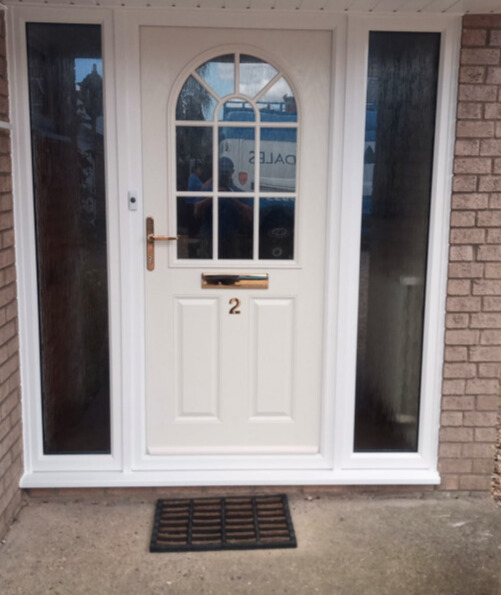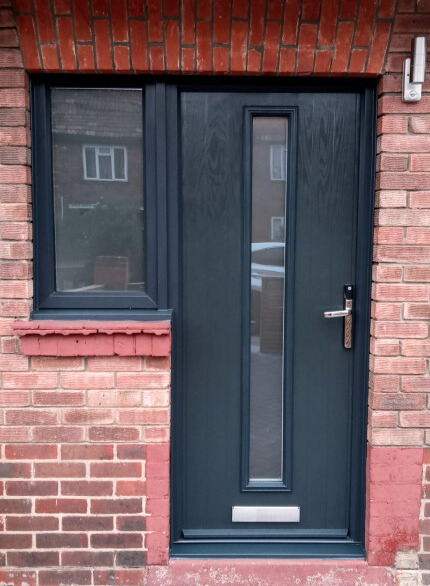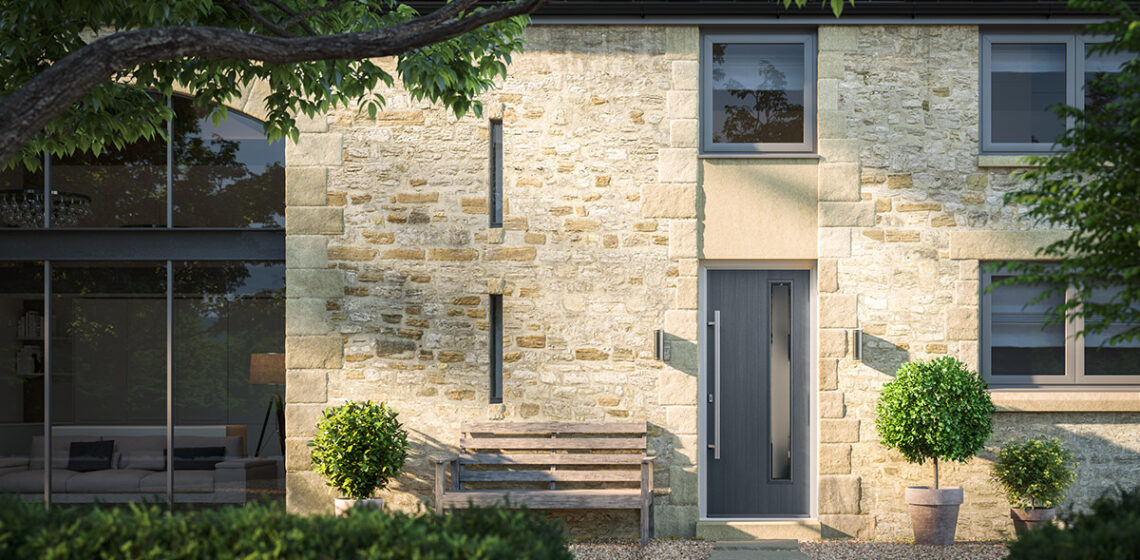Last Updated on 18 June 2024 by Tia Ellahi
Composite doors have gained immense popularity, and it’s easy to see why. They offer greater durability, energy efficiency, and security compared to traditional wooden or uPVC doors. To fully benefit from your composite front door, understanding the importance of the sill is essential.
A sill is a horizontal ledge located at the base of the door frame, ensuring a smooth transition to the exterior while blocking water and draughts from entering your home. It also enhances insulation, helping to lower your energy bills.
When selecting a sill for your composite front door, opt for one crafted from sturdy, weather-resistant material. Ensure it is the correct size for your door frame and fits tightly against the brickwork.
If you’re uncertain about which sill to choose or how to properly install it, consulting a professional door installer is always a wise decision.
What are composite doors?
Before we delve into the specifics of sills, let’s cover the basics: what exactly are composite doors, and why are they so popular?
Composite doors are constructed from a mix of materials, such as wood, fibreglass, and PVC, which makes them extremely strong, durable, and energy-efficient. They are highly resistant to weather damage and require minimal maintenance, maintaining their attractive appearance year after year.
Door Stop composite doors are composed internally of a timber sub-frame and high-density polyurethane foam. Polyurethane is an ideal base material, providing both strength and thermal efficiency. This combination not only enhances the door’s structural integrity but also improves insulation, keeping your home warm in winter and cool in summer. The polyurethane foam core effectively reduces energy loss, contributing to lower utility bills and a more sustainable home. Additionally, the robust timber sub-frame adds extra durability, ensuring the door can withstand daily wear and tear while maintaining its aesthetic appeal.

Modern door sills are designed to enhance energy efficiency by providing a better seal against drafts.
Composite door benefits
Composite doors are popular for several reasons, including their:
Strength and durability
Constructed from a blend of materials such as wood, fibreglass, and PVC, composite doors are designed to withstand heavy use and harsh conditions. This combination of materials provides exceptional structural integrity, ensuring the door remains sturdy and long-lasting.
Energy efficiency
Composite doors offer excellent insulation properties, keeping your home warm in the winter and cool in the summer. The insulating core and high-quality seals minimise heat loss, reducing energy consumption and lowering utility bills.
Security
With robust construction and advanced locking systems, composite doors provide superior security. They are designed to resist forced entry, giving you peace of mind that your home is well-protected against potential intruders.
Weather resistance
Unlike traditional wooden doors, composite doors are highly resistant to weather-related damage. They do not warp, crack, or swell when exposed to moisture or extreme temperatures, ensuring they remain functional and visually appealing in all weather conditions.
Low maintenance
Composite doors require minimal upkeep compared to wooden doors. They do not need regular painting or varnishing and can be easily cleaned with a damp cloth, maintaining their appearance with little effort.
Variety of colours and styles
Available in a wide range of colours, finishes, and designs, composite doors can complement any architectural style. Whether you prefer a classic look or a modern aesthetic, there is a composite door to suit your taste and enhance your home’s kerb appeal.
If you’re seeking a new front door that combines style and security, a composite door is an excellent choice.
What exactly is a sill, and what is its function?
A sill, though optional, is an important component of any front door setup, including composite doors. It is a horizontal ledge installed at the bottom of the door frame, creating a smooth transition between the inside and outside of your home.
The primary function of a sill is to prevent water and drafts from entering your home, protecting against potential damage and enhancing energy efficiency. By acting as a barrier, the sill helps maintain a comfortable indoor environment and safeguards the structural integrity of your home.
Sills are available in a variety of sizes and styles, so it’s essential to select one that fits your door frame perfectly and complements your home’s aesthetic.

Here’s our Cottage Long Composite Door in Grey, with a matching Sill.
Choosing the right sill for your composite door
Choosing the appropriate sill for your composite door is essential to ensure its optimal functionality.
Consider the following factors during the selection process:
- Size: Ensure the dimensions of your sill match those of your door frame. Measure the width of your door frame and select a sill that fits accordingly.
- Style: Sills come in a variety of styles, from standard flat designs to more decorative options. Choose a style that complements the overall design of your home.
Tips for Maintaining Your Composite Door and Sill
To maintain the durability and appearance of your composite door and sill, regular maintenance and care are essential. Here are some general guidelines to follow:
- Routinely clean your door using warm, soapy water and a soft cloth.
- Avoid using abrasive cleaners or solvents that could damage the door’s surface.
- Regularly inspect the sill for any signs of damage or wear.
- Keep the sill free from debris such as leaves or dirt to prevent water buildup.
At Global Door, we are proud to offer an extensive collection of composite doors. Visit our website to view our popular Door Stop composite doors collection.
For more information, please call us on 0800 56 77 406.
FAQs about composite door sills
What materials are composite doors made from?
A composite door generally includes a uPVC frame, a hardwood core, and an exterior layer of GRP (glass-reinforced plastic).
What is the importance of having a door sill?
A sill ensures a smooth transition between the door and the outdoors while also providing protection against water and drafts.
Do I need a sill for my door?
While most doors require an external sill for effective water drainage, if your building already has a stone or tiled sill, an additional sill may not be needed.


